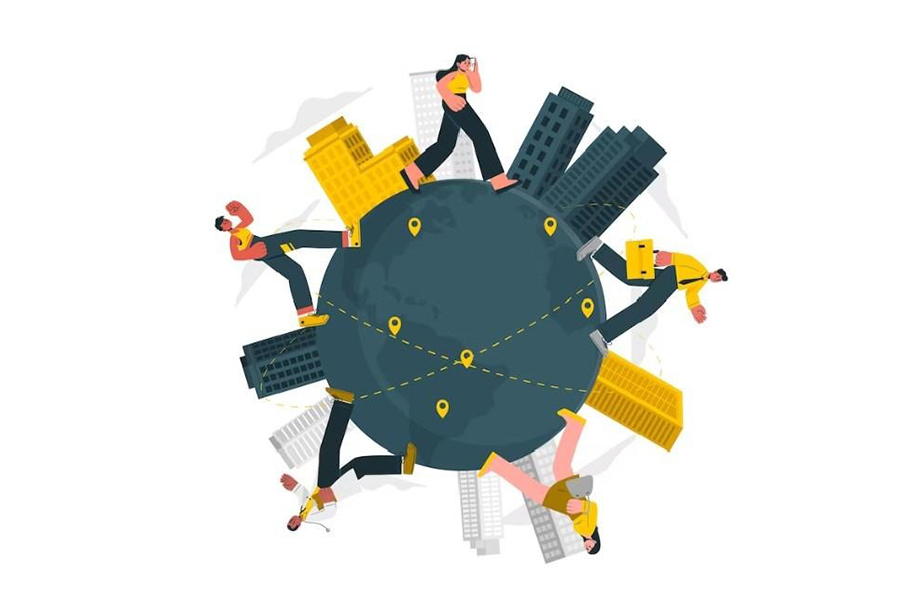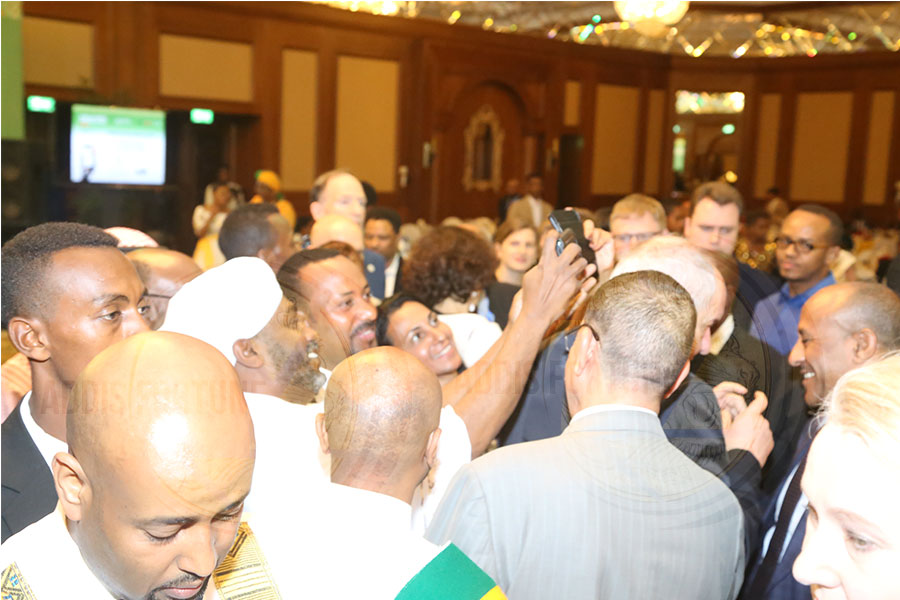
Radar | Mar 18,2023
Jun 7 , 2025
By Kidist Yidnekachew
It was during an ordinary errand, shopping for socks, that an unexpected discovery occurred. A gleaming green beam drew my attention to a curious device: a sleek, stick-shaped pointer with a clip and flower-shaped tip. The shopkeeper described it as a laser toy for children, complete with buttons that changed the light from green to red, blue, and even purple. Priced at just 60 Br, it seemed like a charming trinket certain to delight to my daughter.
But curiosity quickly gave way to concern. Upon closer inspection, the object revealed a jarring message: “DANGER LASER: AVOID DIRECT EYE CONTACT.” Additional warnings, etched in small print, detailed potential hazards. The starkness of the warning felt incompatible with a children’s toy. Unlike common battery cautions, this one hinted at a danger more acute, more immediate.
Children’s natural curiosity often overrides caution. When left alone with devices that glow or flash, they tend to explore. Shining lights into eyes, palms, or against walls becomes instinctive play. Memories of flashlights repurposed into biological experiments, casting veins into relief, came rushing back. The risk of a child pointing this laser at their own or another’s eyes felt alarmingly plausible. It became clear that the toy, although marketed as harmless, carried risks far out of proportion to its playful appearance.
This realisation led to a broader concern: How many caregivers actually pause to read the warnings on such products? The excitement of a child discovering a new toy often eclipses any attention to fine print. In a more typical shopping scenario, with children in tow, distractions would likely have precluded any inspection of safety labels. That possibility was unsettling.
Prompted by this experience, a deeper investigation began into the risks posed by laser toys and how easily these dangers can be overlooked.
Laser toys have grown increasingly popular. From laser-mounted toy guns to spinning tops that project intricate light patterns, they captivate the imagination. Yet beneath their dazzling lights lies a capacity for harm, particularly to the eyes. The concentrated beams emitted by even small laser devices can inflict serious and sometimes irreversible retinal damage.
What makes laser injuries especially insidious is their delayed onset. Exposure rarely causes immediate pain. Vision may deteriorate gradually over days, making it difficult to recognise when damage has occurred. This delayed onset of symptoms not only obscures the initial danger but may also prolong exposure.
Reflected laser beams compound the risk. Mirrors, metallic surfaces, and polished household items can redirect light unexpectedly. A seemingly harmless bounce off a fridge door or window could prove just as harmful as a direct beam. In such scenarios, individuals may not even be aware they are being exposed to harmful laser light until it is too late.
In recognition of these dangers, regulatory bodies like the U.S. Food and Drug Administration (FDA) have stepped in. The FDA mandates stringent standards for electronic products that emit radiation, including lasers. For children’s toys, the FDA strongly recommends Class 1 lasers the lowest hazard classification under international standards. These guidelines ensure that laser emissions remain at levels considered safe for incidental exposure.
However, market trends and consumer behaviour often outpace regulation. Laser pointers, originally designed for professional presentations, are now more powerful and widely available than ever. Though not intended for play, many end up in children's hands, where they are used indiscriminately and without supervision. These devices can emit far more intense beams than toy-grade lasers, making them disproportionately dangerous.
The blurred line between pointer and plaything creates a vacuum of responsibility. As access increases and prices drop, so does the threshold for risk. A small, affordable device, marketed as a novelty, can carry the destructive power of medical-grade equipment.
To mitigate these risks, certain precautions must be non-negotiable. Lasers should never be aimed at people or animals, no matter how innocuous the gesture may seem. The risk of accidental reflection or misdirected play is too great. Shining lasers at vehicles or aircraft is not only reckless but constitutes a serious federal offense in jurisdictions such as the United States, where it carries steep legal penalties.
In the case of breakage, laser toys should be disposed of properly, following environmental safety guidelines to avoid exposure to hazardous internal components. Importantly, high-powered laser pointers should never be purchased for children, nor allowed within their reach. Labels should be checked for power output, and any product lacking this information, or exceeding 5mW, should raise immediate concern.
If laser exposure is suspected to have caused an eye injury, immediate consultation with a healthcare professional is essential. Prompt intervention can help minimise long-term damage and, in some cases, preserve vision.
In sum, laser toys present a paradox: devices meant to entertain can also endanger. Their sleek packaging and colourful lights mask a capacity for serious harm. The decision to avoid them altogether may, in the end, be the safest course. Where such toys are already in the home, strict boundaries and vigilant supervision are essential.
Awareness, rooted in information, not fear, is the most effective safeguard. Safety often hides in fine print. Taking a moment to pause, read, and reflect can prevent years of regret.
PUBLISHED ON
Jun 07,2025 [ VOL
26 , NO
1310]


Radar | Mar 18,2023

Commentaries | Aug 21,2021

View From Arada | Oct 20,2024

Life Matters | Apr 22,2023

Radar | Aug 13,2022

Radar | Nov 20,2023

My Opinion | Aug 13,2022

Commentaries | Dec 24,2022

Fortune News | Apr 28,2024

Fortune News | Sep 03,2022

Photo Gallery | 175490 Views | May 06,2019

Photo Gallery | 165712 Views | Apr 26,2019

Photo Gallery | 156059 Views | Oct 06,2021

My Opinion | 136824 Views | Aug 14,2021

Dec 22 , 2024 . By TIZITA SHEWAFERAW
Charged with transforming colossal state-owned enterprises into modern and competitiv...

Aug 18 , 2024 . By AKSAH ITALO
Although predictable Yonas Zerihun's job in the ride-hailing service is not immune to...

Jul 28 , 2024 . By TIZITA SHEWAFERAW
Unhabitual, perhaps too many, Samuel Gebreyohannes, 38, used to occasionally enjoy a couple of beers at breakfast. However, he recently swit...

Jul 13 , 2024 . By AKSAH ITALO
Investors who rely on tractors, trucks, and field vehicles for commuting, transporting commodities, and f...

Oct 18 , 2025
The political establishment, notably the ruling party and its top brass, has become p...

Oct 11 , 2025
Ladislas Farago, a roving Associated Press (AP) correspondent, arrived in Ethiopia in...

Oct 4 , 2025
Eyob Tekalegn (PhD) had been in the Governor's chair for only weeks when, on Septembe...

Sep 27 , 2025
Four years into an experiment with “shock therapy” in education, the national moo...

Oct 18 , 2025 . By NAHOM AYELE
In a sweeping reform that upends nearly a decade of uniform health insurance contribu...

Oct 18 , 2025 . By BEZAWIT HULUAGER
A bill that could transform the nutritional state sits in a limbo, even as the countr...

Oct 18 , 2025 . By SURAFEL MULUGETA
A long-planned directive to curb carbon emissions from fossil-fuel-powered vehicles h...

Oct 18 , 2025 . By BEZAWIT HULUAGER
Transaction advisors working with companies that hold over a quarter of a billion Bir...